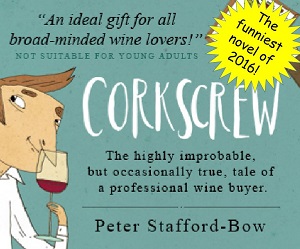 During last week's U.S. Wine & Beverage Industry Expo (USBevX), wine packaged in cans was noticeably present at the event's trade show. The benefits of can packaging are significant: lower production and transportation costs, protection from light, and increased consumer flexibility. All reasons which help explain why canned beer is becoming the industry standard in the craft beer world. But will that standard translate to the wine industry or will it remain somewhat of a gimmick?
During last week's U.S. Wine & Beverage Industry Expo (USBevX), wine packaged in cans was noticeably present at the event's trade show. The benefits of can packaging are significant: lower production and transportation costs, protection from light, and increased consumer flexibility. All reasons which help explain why canned beer is becoming the industry standard in the craft beer world. But will that standard translate to the wine industry or will it remain somewhat of a gimmick? 
It all depends on consumer preferences. On one hand there is evidence that consumers will accept alternative packages and closures. As stated above canned craft beer is a viable option among beer consumers and wine consumers have eagerly accepted the screw-cap closures. According to this Freedonia study, wine consumers are also seeking more flexibility in single serving options and alternative packing. And the canning industry is adding additional flexibility by developing a resealable can for containers larger than single servings.
 But will will this translate into greater market share? The percentage of boxed wine in the marketplace is growing, but it's overall volume is still minuscule as compared to bottled wine. Although I wish them well, I believe canned wine (like box wine) will be hampered by the perception of quality. Or lack thereof. Yes, there are examples of tasty wines within each category - but the overall consumer impression is negative. And that will most likely not change based on the wines I sampled at USBevX.
But will will this translate into greater market share? The percentage of boxed wine in the marketplace is growing, but it's overall volume is still minuscule as compared to bottled wine. Although I wish them well, I believe canned wine (like box wine) will be hampered by the perception of quality. Or lack thereof. Yes, there are examples of tasty wines within each category - but the overall consumer impression is negative. And that will most likely not change based on the wines I sampled at USBevX.Starting with the positive, the two rosé wines -- RUZA Lodi Rosé and Underwood Oregon Rosé -- were tasty, although the Underwood seemed somewhat extracted. And the Francis Coppola Winery SOFIA Blanc de Blanc sparkling wine is a very nice option. This 70% Pinot Blanc, 15% Riesling, 15% Muscat blend receives it's carbonation using the Charmat tank fermentation method. Plus a straw is included so the ladies won't lose any lipstick.
 That being said, when possible, please pour canned wine into a glass. Not only will you be better able to appreciate well made wine, you will be in a better position to identify flawed wine. That's exactly what happened while sampling the Backpack Snappy White. From the can it was okay, but pouring into the glass allowed us to identify multiple flaws starting with a pungent aroma that the can had suppressed. Another disappointment was The Infinite Monkey Theorem Red Wine. While I'm a fan of their Colorado made wines, I couldn't get past the light carbonation in this California sourced wine. Is the carbonation necessary? And the final red wine (that I can't recall it's name) was so flabby and nondescript that we had to liven it with Oak Wise liquid oak. It transformed into a tasteful wine after that.
That being said, when possible, please pour canned wine into a glass. Not only will you be better able to appreciate well made wine, you will be in a better position to identify flawed wine. That's exactly what happened while sampling the Backpack Snappy White. From the can it was okay, but pouring into the glass allowed us to identify multiple flaws starting with a pungent aroma that the can had suppressed. Another disappointment was The Infinite Monkey Theorem Red Wine. While I'm a fan of their Colorado made wines, I couldn't get past the light carbonation in this California sourced wine. Is the carbonation necessary? And the final red wine (that I can't recall it's name) was so flabby and nondescript that we had to liven it with Oak Wise liquid oak. It transformed into a tasteful wine after that. Thus be careful when choosing your canned wine. Many outlets allow you to purchase in singles so experiment to find the quality offerings. Cheers.






































